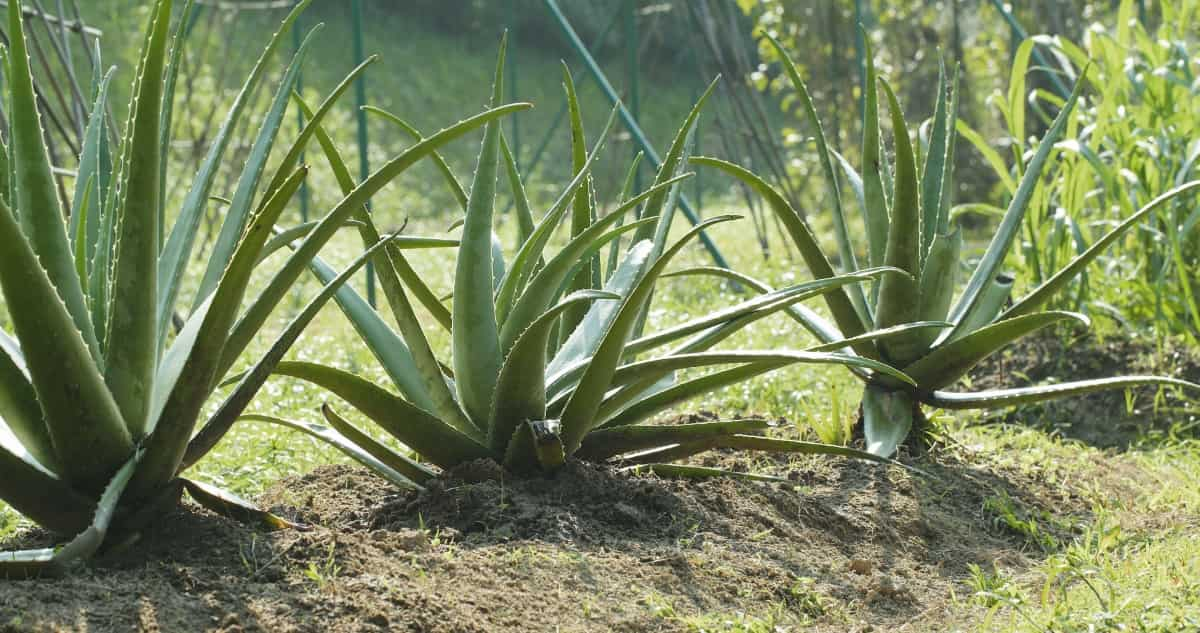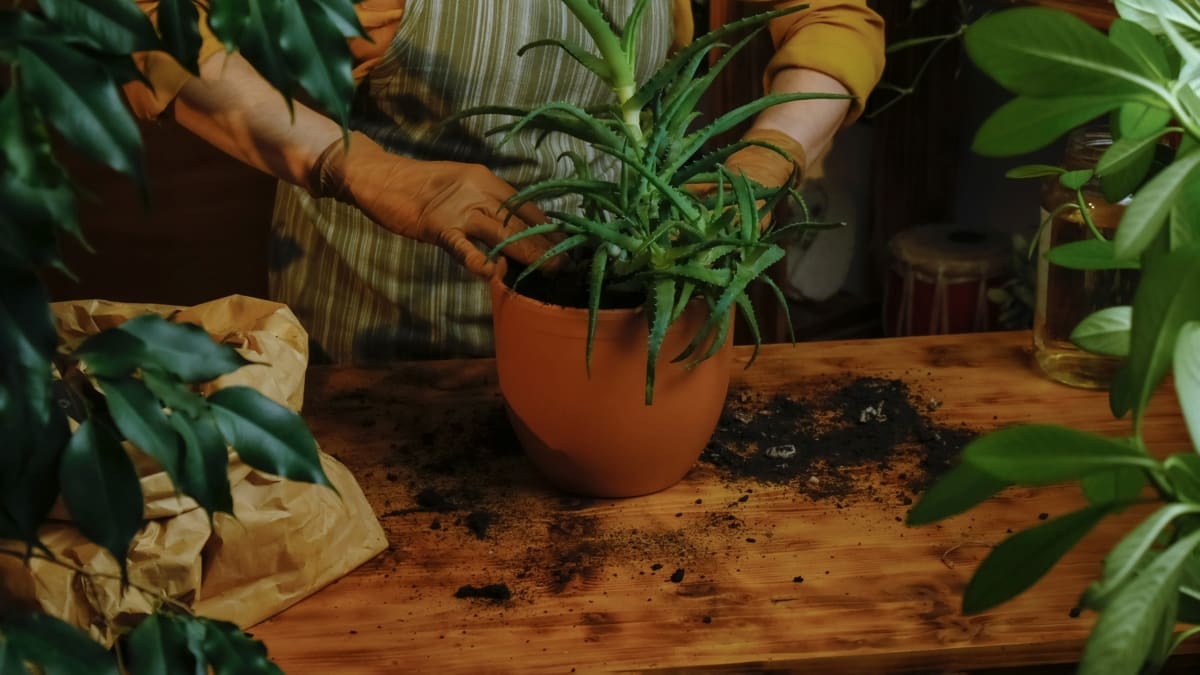Plants like aloe vera are among the most beloved succulents among gardeners and houseplant growers. The introduction of new ornamental varieties nowadays further increases its popularity. Known for its purported health benefits and unique beauty, aloe vera is a great candidate for growing indoors in containers.

It’s easy to understand why growers would be concerned when potted specimens displayed signs of distress. The cause of a problem can often be better determined by learning more about the aloe plant’s needs and common diseases and pests. The following are some common reasons why aloe vera plants die.
7 Causes of Dying Aloe Vera
Due to Overwatering
Plants such as Aloe are succulents. Even in droughts, they survive. This is why aloe plants need little water. If you water your aloe plants more than once a week, you are over-watering them. When aloe plants are watered too often, they display symptoms such as yellowing or browning leaves with drooping leaves. If aloe plants are consistently overwatered, they can develop root rot if they are saved before root rot occurs.
Growing aloe plants successfully requires replicating their native watering conditions. Water your aloe plants generously, followed by a period of drought where the soil completely dries out. You can feel the soil at the bottom of the pot’s base through a drainage hole. It is best to delay watering for a few days if the soil still feels damp or moist. This is the time to water the soil if it feels dry. In general, aloe plants should be watered every three to four weeks.
Due to Incorrect Sunlight Exposure
Aloe plants are tolerant of direct sunlight. Insufficient sunlight can cause stress conditions which can lead to the death of your plant. Aloe vera requires 6 to 8 hours of direct sunlight every day to thrive. A dark place indoors can also harm your plant. Shady and dark environments are not suitable for succulent plants. In this condition, you’ll notice droopy, discolored leaves.
Your plant should be moved to an area with sufficient sunlight and warmth. Sunlight is essential to the health of the plant. Your plant will also die if placed in a dark place since the soil will remain damp, which will cause root rot. Provide shade to your plants if exposed to the hot afternoon sun.
Due to Incorrect Potting Mix
The soil in which aloe plants grow in their native environment is very gritty, porous, and well-draining. Your aloe plant can develop the same symptoms of overwatering if you use conventional potting soil, such as yellow or brown leaves with a mushy texture and a droopy appearance. Aloe roots can rot in damp or slow-draining soil for too long.
In case you missed it: 7 Causes of Dying Ginger Plant and How to Fix It?

To save your Aloe, replace the soil if your Aloe is in conventional potting soil that does not completely dry out after watering. Carefully remove the potting soil from your aloe plant, avoiding damaging the roots. Plant it in specially formulated succulent soil available from garden centers to mimic its native environment’s well-draining soil profile. Replace the old pot with a new one or wash it thoroughly with a disinfectant that kills all pathogens responsible for fungal diseases.
Due to Cold Temperatures; Cooler than 10°C
Plants of the aloe family are not cold-hardy, so they will die if exposed to temperatures below 10°C for a prolonged period. A temperature range of 13°C-27°C is ideal for aloe plant growth. Aloe leaves can become mushy and brown or black depending on the cold damage severity, resulting in a dying appearance. Only certain parts of the aloe plant usually turn soft and mushy.
Ensure that none of the leaves are in contact with a cold window or in a cold air current if this is the problem. Move the aloe plant to a climate between 13°C-27°C consistently. As the specific cold-damaged areas do not always recover, cut the leaf back to below the mushy area once it has dried up. To prevent other potential problems, stop watering the Aloe until the callus has healed over. After being damaged by cold, the aloe plant can eventually grow new leaves and regain its normal appearance.
Due to Excessive Humidity
As compared to other houseplants, aloe vera plants require less humidity. Because succulent plants hold moisture, they can grow in dry conditions. It’s not really good for your potted plants to have too much humidity, which can cause them to grow damp and even cause them to die if neglected. It may be necessary to dehumidify aloe vera plants in humid areas. You can reduce the humidity levels around your plants in this way since high humidity can gradually kill them.
Due to Incorrect Pot Size
Check if your aloe plant is in a small container. The roots of the aloe plant will spread as the plant grows, seeking more space and nutrients. Packing in a small container will not be good for them. By observing the leaves, you can tell when the time is right. In the case of large leaves, moving them to a larger pot will be necessary. When you lift your plant from the pot, you will notice a tightly tangled mass of roots that is hard to untangle. You should transplant your aloe plant into a larger container once it has grown.
Due to a Lack of Nutrients
Unlike other plants, aloe vera plants don’t require a lot of nutrients from their potting mix. The potting mix may be lacking nutrients, and that could be the reason why your houseplant is dying. In unhealthily grown aloe vera plants, the foliage turns pale, then light brown over time. Despite correct watering, their foliage may dry up, and witherOverfeeding can cause the plant to accumulate too much salt, so fertilizer must be applied minimally. Excess salt can cause browning of the roots when it builds up. Repot your plant if necessary after thoroughly soaking it in water and leaching the soil.
In case you missed it: 7 Causes of Dying Leafy Greens and How to Fix Them?

Conclusion
This guide has provided information about the common problems that can cause an aloe plant to die. You can now monitor your aloe plant’s health using the tips listed here. Whether you grow them indoors or outdoors, they can be revived and grown well.
- Feed Your Flock for Less: Top 10 Tips to Save on Chicken Feed
- Ultimate Guide to Ossabaw Island Hog: Breeding, Raising, Diet, and Care
- Hatching Answers: The Top 10 Reasons Your Chickens Aren’t Laying Eggs
- Eggs and Economics: Breaking Down the Cost of Raising Backyard Chickens
- Defend Your Greens: Proven Methods to Keep Iguanas Out of Your Garden
- Ultimate Guide to Cinnamon Queen Chicken: A Comprehensive Guide for Beginners
- Ultimate Guide to California Tan Chicken: Breeding, Raising, Diet, Egg-Production and Care
- Ultimate Guide to Marsh Daisy Chicken: Breeding, Raising, Diet, and Care
- 10 Types of Chicken Farming Businesses You Can Start for Profits